The Palace at Ikere
Ikere is a small West African town that dates to the 13th century AD. Ikere historians recount the Benin/Edo origin of the Ikere monarch and palace system. Just as in the Biblical story about Jacob and Esau, a second-born Edo brother received the first-born brotherís birthright and was installed King of Benin Kingdom.
Rather than fight, the first-born, Prince Agirilala, left Benin and became the founder of the Ikere palace systemónaturally a replica of the Benin or Edo system.
Unlike the Benin palace which has been relatively well maintained and highly publicized (partially for its highly sophisticated artwork, much of which was seized by the British in the late 1800s), the Ikere palace has fallen into such disrepair that it is hardly recognizable under the corrugated tin roofs that hide the palaceís original walls. One of Ikere palace's orginal doors is in the British Museum. With the deterioration of the Ikere palace has come dissolution of much of the way of life that has its roots in traditional practices dating back, perhaps, well over a millennium.
Inspiration
My Palace Initiative
was inspired by the desire to help organize the restoration of the palace
of Ikere. we quickly realized that neither the collapse, nor the conditions leading
to the collapse of the palace, was unique to Ikere. Indeed,
archeologists and historians estimate there are thousands of palaces
across Africa, and most of them need work. As such, My Palace Initiative is a
Pan-African one. We hope that the reconstruction of the Ikere palace
will serve as a model for our next undertaking.
|
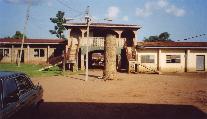 |
| Main Entrance and courtyard of the Palace at Ikere |
|
|
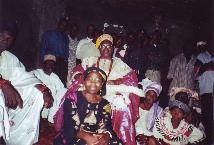 |
| Founder Remi Omodele (foreground), with His Royal Highness, Oba Adegboye |
|
|
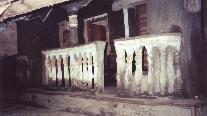 |
| Small Vestibule in the Palace Interior |
|
|
Within the gardens and walls of the Ikere palace, as with other palaces throught Africa, the cultural life of African people thrived prior to European colonization.
Unlike European palaces, African palaces were built by, and belonged to, the people. No one owned the palace; rather, the palace belonged to everyone and served as housing for the royal families as well as those in need. The poor as well as travelers could always count on the palace for refuge.
In addition to residential quarters, the palace also incorporated shrines, meeting places, healthcare venues, offices for ritual professionals, studios for royal artists and craftsmen, storehouses, and very often, wells to supply potable water--water which was believed to harbor healing powers.
Just outside the palace walls is Oja Oba, the town's major market place named for the King. History has it that many private homes were demolished to provide this space exclusively for women traders to conduct their business under the Oba's full protection. It has always been a reciprocal relationship: typically, every duly appointed Oba enjoys the adoration and indispensable support of the market women.
We want to rebuild these cultural icons and return to our children the vibrant way of life the ancient earthwork palaces fostered. This is one of our many gifts to the world, and it is our obligation to preserve and restore the palaces as they were originally built.
|
 |
| Elements of Disrepair - Exterior Courtyard |
|
|
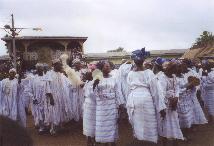 |
| Celebrants at the Annual Yam Festival - within the Palace grounds |
|
|
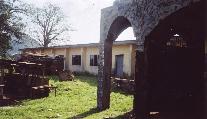 |
| Elements of Disrepair - Interior Courtyard |
|
|
The Ikere Palace Restoration Subcommittee
Dupe Folayan, Minnesota
Subcommittee Chair
Tayo Ajewole, London
Jide Akinola, Maryland
Micho Ade, Ibadan
Dupe Adeniyi, Lagos
Ojo Abioye, Akure
Chief Olusola Bayode, Ikere, Adviser, Funds
Princess D. Abioye, Adviser, Aafin Ogoga history
Iyalode Bosede Akanle, Ikere, Adviser, Cultural
Prince Adedotun Layade, Ile-Ife, Restoration
|
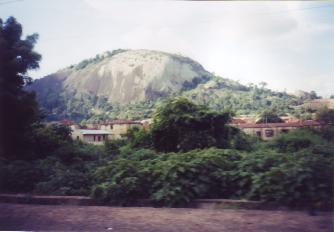 |
| Olosunta Orun'kere, one of the town's many impressive and revered mountains |
|
|
 |
| Dupe Folayan, Ikere Subcommittee Chair |
|
|
|